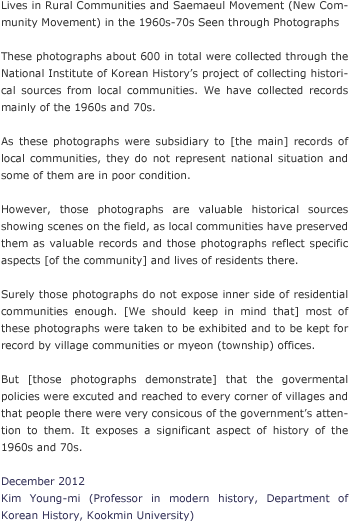The main feature of the New Village Movement was its “village” campaigns. If cement was sent to individuals, the town (Myeon), or the county (Gun), how much cohesiveness and devotion would farmers have brought to the group? What if it was not the New Village Movement, but the New Township Movement or the New County Movement? The reason that the New Village Movement elucidated such a response from farmers is because it was a movement for “villages”. Villages have a special meaning in rural Korea. Since traditional times, villages which had naturally developed as residential spaces functioned as an innate community or living community. Even toward the end of the 1970s this sense of community was maintained comparatively strongly. Rural village communities were the most important basis of mobilization for the New Village Movement.
-
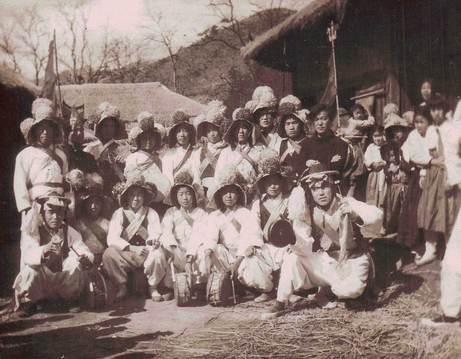 Traditional farming music (Nongak) troupe from Gilseong-ri (village), Buk-myeon Hwasun-gun
Traditional farming music (Nongak) troupe from Gilseong-ri (village), Buk-myeon Hwasun-gun
Nongak (Korean Traditional farming music), also called Pungmul, Dure, Pungjang, Gut, is a type of music performed to raise excitement in rural villages at times of collective work or on holidays. Dure, the custom of collective labor in rural villages, continued until the mid-1960s, but as the phenomenon of rural-urban migration increased it disappeared due to a shortage of labor. From the 1970s finding labor in the agricultural busy season became difficult and it was necessary to pay expensive daily wages. Personal photograph from Buk-myeon, Hwasun-gun, Jeollanam-do. 1965.
-
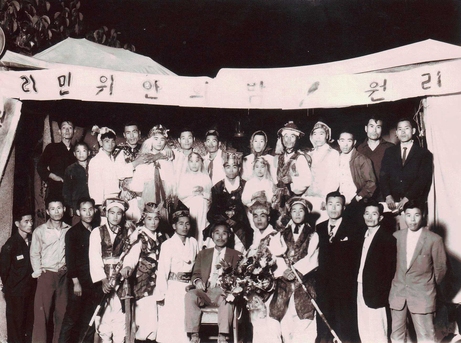 An evening of relaxation for villagers
An evening of relaxation for villagers
Personal photograph from Buk-myeon, Hwasun-gun, Jeollanam-do. 1964. An image of modernized village festivities. Young people in the village dressed up and performed in front of the gathered residents. At this time there were still many young people in the villages, and the village community is clearly shown.
-
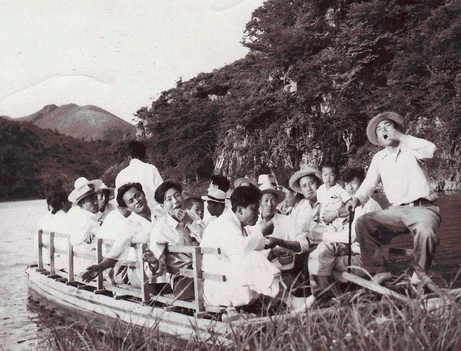 Playing on boats on the Mangyeong-dae (pavilion), Dongbok
Playing on boats on the Mangyeong-dae (pavilion), Dongbok
Excursions for male villagers were frequent, but it was almost impossible for women to participate in village culture before the New Village Movement. Playing on a boat at the Mangyeong-dae (pavilion), Dongbok. 1960. Photograph owned by Oh Jaechan, of Dongbok-myeon, Hwasun-gun, Jeollanam-do.
-
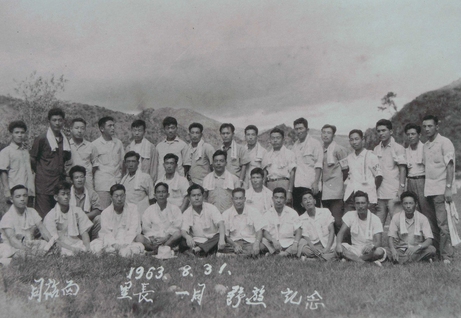 Village heads in Dongbok-myeon
Village heads in Dongbok-myeon
Photograph owned by Kim Hyeongchae, of Dongbok-myeon, Hwasun-gun, Jeollanam-do. 1963. After the military coup d’etat the age of village heads gradually started to decline. This is because there were many administrative duties which were increasingly particular. Village youths who had completed their education and military service became village heads, revealing the trend to defend the village from external forces. The emergence of young village heads was a demand of the state’s administrative offices as well as part of the villages’ voluntary response.
-
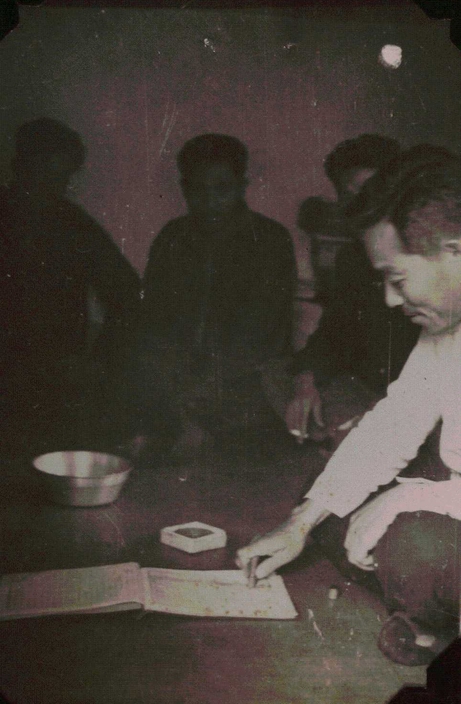 The rights and responsibilities of the village head
The rights and responsibilities of the village head
Until the 1970s the village head held the seal of every resident of the village. The village head’s purpose was to work on behalf of the residents, but they were equally powerful in their right to decide many things arbitrarily. Scene from village residents meeting in Maechon-dong, Ssangnim-myeon, Goryeong-gun. 1969. Photograph owned by Ssangnim-myeon Town Hall.













